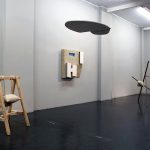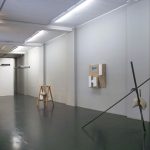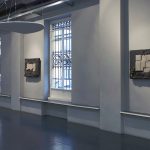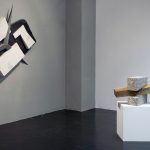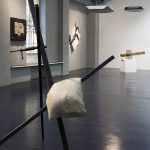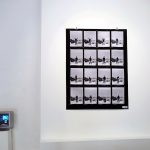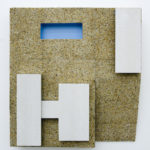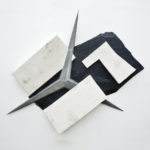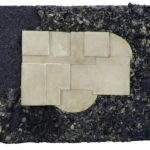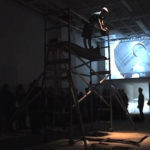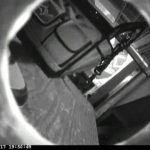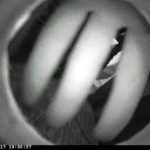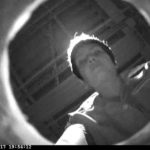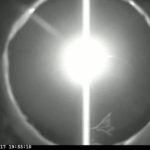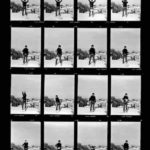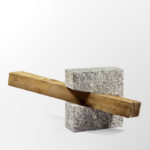
Do you want search ?
Steel and Freedom
Works
Wilfred Almendra
Milène Guermont
Roberta Lima
Benjamin Sabatier
OTTO ZOO is pleased to present Steel and Freedom an exhibition curated by the New York-based curator Lara Pan featuring works of Wilfrid Almendra, Milène Guermont, Roberta Lima and Benjamin Sabatier.
The exhibition concept starts by posing some questions. Most economic theories insist on treating labor as a commodity, which brings to mind the concept of supply and demand. What can be introduced to this concept to allow the world to seem more human? What critical statement can be made about cultural and social reality and its evolution in the future? The works of these four artists embody the synchronization of our perceptions, and define processes going on in the world. They look at society by combining aesthetic, economic, political and spiritual perspectives.
In his sculptures and installations, Wilfrid Almendra (1972, Cholet – France; lives and works in Cholet) questions the suburban destiny of the Modernist Utopia. While collective Utopias have fallen short, housing estates have fallen in disgrace and the vast majority of people in industrialized countries now consider single-family dwellings to be the ideal living environment. This new horizon, in terms of architecture, landscape and urbanism also corresponds to a new frame of mind and a different approach to social life: one with the other – or rather ‘one next to the other’.
In the show, some two-dimensional works made out from concrete, macadam, plaster, wire, zinc are presented from the series Basement (2011), a study on prototypes of one-family houses in Phoenix, Arizona, and from the series Killed in Action (Case History Studies) (2009), based on an iconic and idealistic postwar housing project which has strongly influenced American residential architecture in the years to follow.
Milène Guermont (1981, Normandy; lives and works in Paris) chooses to work with concrete to convey emotional messages. She presents three works from the series Grey Wavy: thin concrete sheets, where moonlike landscapes appear on one side, in the form of small craters. In this dialogue of lightness and heaviness, movement and stillness, she poeticizes her static creations, by questioning: “With a few grams of concrete, how can we be transported to the sea?” She goes on: “Grey Wavy crawls topples and escapes from the workshop. Grew Wavy is a perfectly smooth, a sixty six pound sheet of concrete. However, on the reverse side, one can see a landscape of irregular craters.”
Guermont’s background as an engineer allows her to explore ideas of naturalizing and humanizing raw material such as concrete. She puts movement and life into the structure itself.
Roberta Lima’s (1974, Manau – Brasil; lives and works in Vienna) experience as an architect distinguishes her artistic expressions into the new forms of performing arts. She explicitly uses her body as an architectural tool. Public at her performances go through the process of testing temporal effects of architecture.
In the exhibition two videos and one photographic series are presented – all referring to a performance named Displacement which was executed at White Box in New York in 2012. Lima once more refers to various theories, such as of bio politics, and makes use of different elements to debate the concept of displacement. With or without consciousness, Lima is exploring the boundaries of feminism again, and we can see this by referring to Dolores Hayden and her architecture of gender.
Benjamin Sabatier (1974, Le Mans – France; lives and works in Paris) places the work of art at the heart of contemporary, socio-economic reality and interrogates us on different features in our society – standardization, excessive consumerism, the alienation of work – the infinite repetition of gestures – and the place that these essential sociological reflections are currently found in art. Sabatier identifies ideological positions and beliefs about the work of art and its relationship to life and labor. Through this we notice the positions which different players take – arriving closer to or farther from each of their beliefs. Nostalgia for manual labor prompts a new way of thinking about environmental issues and questions the functions of our social and natural habitat.
The three works exhibited, Tréteaux II, Trépieds e Beam, are sculptures constructed using metal, concrete, granite and wood.
The artists in the exhibition respond to the global, economic and social models, by expressing a new visual language through the process of reconfiguration. There is sometimes a confrontation between visual language, economic disorder and transformational processes, which attempts to identify and determine social, political and cultural structures in urban reality.
